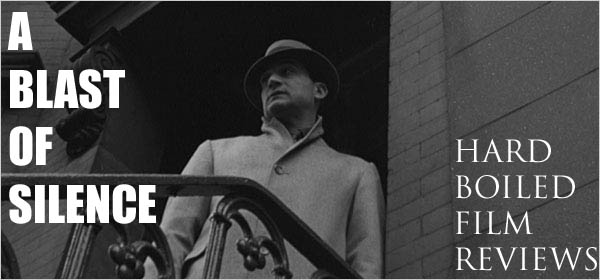
I often think that the absolute best films, aesthetics aside, are the ones that are able to challenge its viewers morally. Three Monkeys, a crime drama out of Turkey, is one of the latest champions at being able to make a lot out of a rather simple but serious predicament.
Three Monkeys is the much talked about film that won director Nuri Bilge Ceylan a very well deserved best director award at the 2008 Cannes Film Festival. After wealthy businessman Servet (Ercan Kesal), who is entering a political race, strikes and kills a pedestrian on a dark night, he calls his driver Eyüp (Yavuz Bingol) and asks him to take the blame for him. Eyüp’s agreeing to help Servet out of his trouble is only the beginning of the problems his family is set to deal with.
Ceylan’s film opens as morose and dark as the rest of the film’s theme continues to be. At the center of Three Monkeys is a noir-based melodramatic story of a family’s inability to cope with internal struggles. The true exploding point of the film’s moral-challenging story is when Ismail (Rifat Sungar), Eyüp’s son, finds that his mother Hacer (Hatice Aslan) is potentially having an affair with Servet, the man who Eyüp is so graciously taking the fall for.
The film carries an extremely somber mood all the way throughout the film not only due to the serious nature of the family’s problems, but also because of the extremely dark palette of colors Ceylan chose to use when filming. The image of Servet’s disappearing car in the film’s intro is only the beginning of striking and stunning imagery used by Ceylan over and over again. With his unique and creative eye for visuals, Ceylan turns this film into a dreary painting of motion. It all speaks volumes to the levels of hell these characters are freefalling through.
To be applauded over and over again is Ceylan’s absolutely poetic style of unfolding everything through the camera lens. This is one of the most brilliantly photographed films I’ve seen in the past few years. There are many long takes, intimate close-ups to expose character grief and creative ways of portraying character quarrels, such as the camera being distant from the two characters that are actively in conflict. Ceylan, who also co-wrote the film, can be seen as a true visionary of the art that cinema can sometimes be. With cinematography to be remembered, this is quite possibly the most artistic a noir-bred story has ever been portrayed.
The small but stellar cast is additional help to perfecting Ceylan’s vision. Kesal, Bingol, Aslan and Sungar give the four key performances that give the film the emotional push so necessary to the subject nature. As the film progresses and conflict and confrontation heat up, the performances of Bingol and Aslan as the married couple are two to keep a particular eye on. They are the extreme focus of the second half of the film and for good reason. This film is purely plot and character driven. The actual actions that bring bad fortune to the characters are off screen, leaving this film at the hands of its strong performances, deep character development and coherent narrative.
I will agree with anyone who criticizes the film for moving slow. What I won’t do is agree with that being a suitable criticism. I’ve found that life moves at a slow pace. It isn’t simply a rapid progression of events and ever-changing emotions and feelings. I absolutely loved the way the narrative seemed to drag. For me it only increased the tension the characters faced. When you learn, in brilliant visual style, that the family is not only dealing with its current problems, but is also haunted by demons from the past, it all hits so much harder.
I also must note that what only adds to the unique nature of this film is that I found it to be more about the way this family plays to all of its problems in a deaf, dumb and blind way. The film is not so much about the multitude of problems the family is dealing with, but rather the problem they have as acting like a coherent and communicative family.
Tension increasing narrative with sparse dialogue and glimpses of action from time to time might be seen as slow to some, but patience and a willingness to want to be challenged by Ceylan’s questions of morality result in Three Monkeys ending as a brooding masterpiece of the mise-en-scene pent up with undeniable character rage.




1 comment:
Wow. This sure does sound like a moral drama, especially the affair part.
You did a nice job explaining how a simple moral dilemma can turn into a huge implosion of family and friends' relationships.
Loyalty is always an interesting subject.
Post a Comment